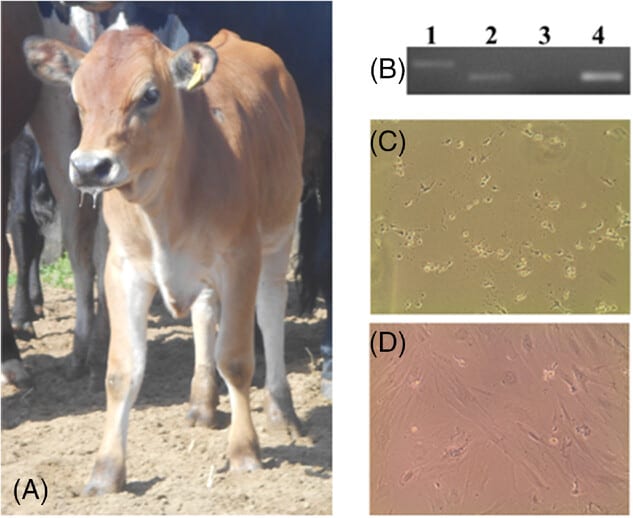
Researchers have engineered a cow capable of producing milk that contains human insulin. This could be an alternative avenue for insulin production, enhancing the availability and affordability of this precious drug for diabetics around the globe.
Diabetes affects millions worldwide. It this condition the body cannot effectively manage blood sugar levels. For type 1 diabetics and some type 2 diabetics, injectable insulin is a lifesaver. However, the World Health Organization points out a glaring issue: access to insulin is limited, especially in lower-income nations, leaving many untreated.
Researchers at the University of Illinois Urbana-Champaign and the Universidade de São Paulo have proposed a novel solution: using cows as “biofactories” to produce insulin. The process involves inserting human DNA coding for insulin into cow embryos. The result? A calf bred with the ability to produce human insulin in its milk. If production can be scaled up, this could be one of the most important advances in biotech we’ve seen in a long time.
From Moo to Medicine
Traditionally, insulin production involves cultivating the protein in bacterial cultures, a method that requires sophisticated lab setups. Ironically, much further back in history, before the advent of recombinant DNA technology, insulin was extracted from cow pancreases sourced from slaughterhouses.
Scientists used a modified virus carrying a specific cow milk protein promoter and human insulin gene sequences to alter adult skin cells. These modified cells were then used as a template to create embryos. These genetically engineered embryos were implanted into recipient cows, resulting in one successful pregnancy.
“Mother Nature designed the mammary gland as a factory to make protein really, really efficiently. We can take advantage of that system to produce a protein that can help hundreds of millions of people worldwide,” said Matt Wheeler, professor of animal sciences at the University of Illinois Urbana-Champaign.
“Using a DNA construct specific to mammary tissue means there’s no human insulin circulating in the cow’s blood or other tissues. It also takes advantage of the mammary gland’s capabilities for producing large quantities of protein.”
By genetically modifying these glands to produce human insulin, the researchers managed to tap into an abundant and cost-effective resource.
Not only did the modified cow produce proinsulin, but it also converted some of this precursor into active insulin directly. This could dramatically simplify the production process, hence reducing costs.
Farm to Patients

Using conservative estimates, a single cow could produce about one gram of insulin per liter. The typical Holstein cow makes 40-50 liters per day. Each gram is equivalent to over 28,000 units of insulin. So a single cow could supply thousands of type 1 diabetes patients with their daily insulin for an entire month. “The mammary gland is a magical thing,” Wheeler said in awe.
Even more insulin could have been produced if this particular cow had been induced to produce milk through insemination. However, since that attempt failed, the researchers had to resort to special hormones to trigger lactation. It still worked wonderfully, but the insulin was in a smaller quantity than would have occurred after pregnancy.
A challenge with huge potential benefits
This research is not without its hurdles. Scaling up production, ensuring the health and welfare of the transgenic cows, and navigating regulatory approvals are all huge challenges that lie ahead.
However, the potential benefits are too significant to ignore. American spending on insulin increased to $22.3 billion in 2022 from $8 billion in 2012. The drug is rather cheap to produce with conventional methods but is often sold for a huge profit by manufacturers. Prices may go up from the supply side though in light of recent shortages caused by skyrocketing demand for Ozempic, a weight loss wonder drug.
The plan is to clone this cow and attempt to achieve pregnancy for full lactation cycles for greater insulin yield.
“With regard to mass-producing insulin in milk, you’d need specialized, high-health-status facilities for the cattle, but it’s nothing too out of the ordinary for our well-established dairy industry,” Wheeler said. “We know what we’re doing with cows.”
“I could see a future where a 100-head herd, equivalent to a small Illinois or Wisconsin dairy, could produce all the insulin needed for the country,” he said. “And a larger herd? You could make the whole world’s supply in a year.
The findings were reported in the Biotechnology Journal.









